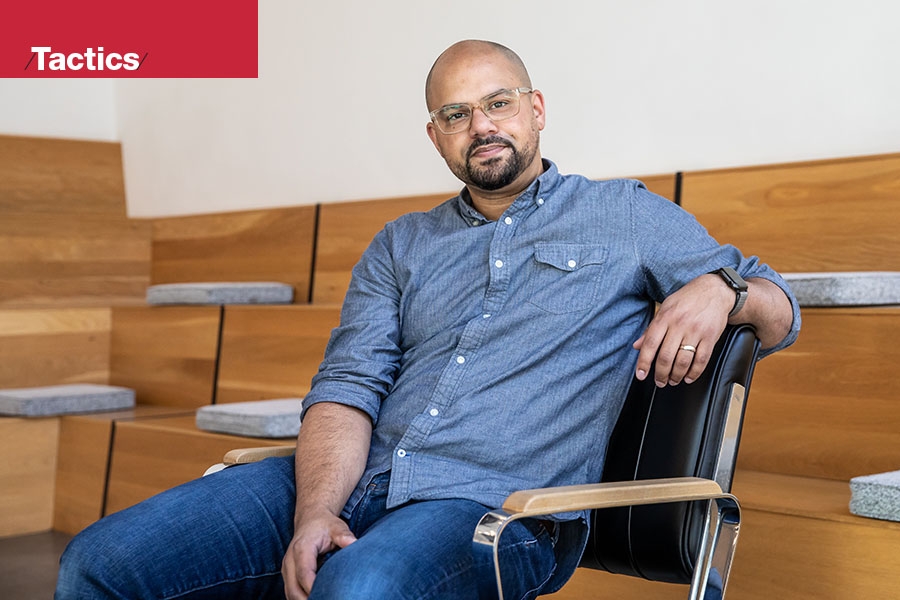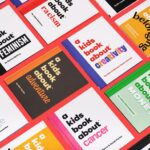Jelani Memory, founder and CEO of A Kids Company About, discusses the launch of his children’s media company.
In October 2019, Jelani Memory made a splash in the publishing scene with his “A Kids Book About” series, designed to introduce children to serious topics in an engaging way, and encourage family discussion. Topics range from racism to empathy, adoption, autism, feminism and climate change.
The company’s business model revolves around a direct-to-consumer ordering website. The series has been a smashing success, with books being ordered faster than they were printing. The company moves quickly to get good information about complex topic into kids’ hands, publishing a free digital book about COVID-19 in March of last year.
Now Memory is expanding his operation: A Kids Company About, which launched in August, adds podcasts and streaming video content for older children (10 to 15) designed to introduce them to career paths, passions, ideas and life skills.
This interview has been edited for length and clarity.
Why did you decide to expand your companyinto a streaming service?
I remember the exact moment. It was August of 2020 and business was going bananas. We literally could not print the books fast enough. I wanted to keep things small and not raise more money, but I was looking at this little book business that I started and realized it wanted to become bigger. More important, it wanted to have more of an impact than I as a CEO am letting it have by not growing the team.
I took some advice and stepped back from the day-to-day of the business to work on vision. It hit me like a ton of bricks. What we were good at wasn’t books — it was storytelling. And there were all these other venues to tell stories.
The first step was audio. I’ve been a fan of [podcasts] since way back when you had to download them on your iPod. My kids love podcasts. They wait for certain stuff to come out. I thought, “Wow, what a great place to tell stories for kids.” Then I thought about the audio-visual skills I developed earlier in my career and put two and three together.
I also wanted to connect with older kids. I have three teenagers myself, and you can’t give them a big, heavy book and say, “Read this whole thing, then come back and let’s talk about it.”
Given the stiff competition with other streaming services, how will your media company distinguish itself?
I had started getting into MasterClass, and I thought about what it would be like if instead of teaching you how to cook, act or negotiate, these videos taught life skills. How to discover that thing you’re meant to do. How to be yourself. Content like this really hasn’t been created before.
I remember being [a kid], and you run into adults at that age who inspire you and motivate you and become a part of making you who you are. I thought, “What if we can put those kinds of individuals in front of kids from a career perspective so they can see what it’s actually like being an architect or a musician or a lawyer or an entrepreneur?” Not to let them know everything there is to know about the career, but to spark interest to go down that path if they choose to.
What was the process like of getting the company off the ground?
What has spurred the urgency of the content we’re creating is the trauma and collective upheaval of kids’ lives. They were used to doing things in a certain way, and all of that got changed overnight.
Our books, our podcasts and our classes went from “Oh, these are nice things to have” to “These are necessary things to have.”
Our first step was raising the capital and finding investors. For some investors it was a tough sell, but that was OK. We had our pick of the litter in terms of choosing people who believed in what we did, and saw the Walt Disney vision of what we were trying to build.
What is the process like creating the streaming content?
The name of the game was creativity and speed. For the podcast, I hired a career librarian and two other people, and the idea was: “Let’s go find people with incredible stories to tell, who have a strong voice but who have maybe never done a podcast before.”
The most expensive thing we do is buy equipment. But apart from that, there’s a lot of creativity involved, and we’ve gotten some great results from people so far.
Creating the video content is very different. I hired a friend of mine from college who likes to wear every hat in production. He likes to direct, act, write, shoot, edit. He’s the only person as crazy as me.
I’ve heard from the blogosphere that MasterClass spends a quarter of a million dollars and up on their classes, which makes sense if you’re hiring Hollywood directors and working with Samuel L. Jackson.
That’s not us. We’re finding our own-voice stories, first-person perspectives — not necessarily the most famous architect in the world, but someone who loves their job and is really good at it.
How does a media company like yours generate revenue?
We have three separate verticals, so we have three streams of revenue. Books, which is our main source of revenue; podcasts, which is the least profitable, but we expect some marketing there in the future. Last but not least is the digital recurring subscription, which is the golden goose for media companies these days.
With the podcasts, our monetary strategy is pretty simple: to grow our listenership, not necessarily to sell ads but to remonetize by linking back to our classes and kids’ books. It’s more about branding and we’re playing the long game. It doesn’t even need to break even, it just needs to grow.
For the classes, we are building up a library of content and retaining them. Our media platform will live or die based on if parents and teachers think our classes are a good fit for the kid or kids in their life — plus, if that kid doesn’t think it’s lame.
Over 90% of your investors are from Black-owned businesses. Why is it so important these companies are the backing behind you?
If I’m being candid, it’s about proving you can do things in a different way. Over half of our content creators are people of color. We didn’t just want to break barriers on one aspect of the business, we wanted to play the same hand and see it work across other dimensions as well.
We can’t say, “Oh, we have diverse content creators so we can slack off on the crew.” or “Oh, we have a diverse crew so we can slack off on investors.” You can say you’re about equity and diversity, but it’s only words until you put it into practice.
For us, it’s about being about what we say we are about and showing it can be done.
How do you ensure your content has a wide reach?
MasterClass has done a really great job, so that was a comparable for us. We already have a bunch of customers through our “A Kids Book About” series, parents and teachers, who all have kids in their lives that are growing up and aging out of the content.
It’s not like we’re going up against Netflix, Hulu or HBO Max. We’re fundamentally playing a different game. From a business perspective we’re sound, from a distribution perspective we’re sound. From a content perspective, I think we’re sound, but customers will prove that out.
What’s exciting to me is that we are genuinely just getting started. This is really the tip of the iceberg. Not just pie-in-the-sky stuff, things we are building and putting together right now, which is why we can say we are building the future of kids’ media.
To subscribe to Oregon Business, click here.







